Theme: Challenges and New Concepts in Bacteriology & Antibiotics Research
Mail us at:bacteriology@annualamericacongress.org
Bacteriology 2019
- Bacteriology 2019
- Welcome Message from Mayor
- Sessions and Tracks
- Why to attend?
- Call for abstracts
- Travel Guide & Visa Information
- VISA Information For Delegates
- Pre-Conference Workshop Invitation
- Market Analysis
Details of Bacteriology 2019 Conference in Canada:
| Conference Name | Place | Date |
Bacteriology 2019 |
Vancouver, Canada | April 26-27, 2019 |
Conference Series LLC Ltd invites all the participants from all over the world to attend 7th International Conference and Exhibition on Bacteriology & Antibiotics during April 26-27, 2019 at Vancouver, Canada which includes keynote presentations, Oral talks, Poster presentations and Exhibitions.
For more details download our brochure here: https://bacteriology.conferenceseries.com/conference-brochure.php
Find more reviews about our organization @ www.conferenceseries.com/usa-meetings/reviews
Bacteriology 2019 aims to bring together leading academic scientists, researchers and research scholars to exchange and share their experiences and research results on all aspects of Bacteriology & Antibiotics. It also provides a premier interdisciplinary platform for researchers, practitioners and educators to present and discuss the most recent innovations, trends, and concerns as well as practical challenges encountered and solutions adopted in the fields of Bacteriology.
All honourable authors are kindly encouraged to contribute to and help shape the conference through submissions of their research abstracts, papers and e-posters in all areas of Bacteriology & Antibiotics are cordially invited for presentation at the conference.
Bacteriology 2019 is anticipating participants from 40 and more countries across the globe and the two day conference will provoke plenary sessions, Keynote speeches, Poster, and Oral presentations. This program provides two days of robust discussions on recent advancements and new strategies for development of new materials for global requirements.
Get connected on Facebook, twitter, LinkedIn for latest update.
We would also like to bring to your kind notice that we have 300+ journals where you can publish your full length manuscripts at discounted price. If you are interested please contact me [bacteriology@annualamericacongress.org] for further details.
Our pleasure to meet you in upcoming event…!!!

Track 01: Clinical Trials of Antibiotics
Prescribing doctors are, increasingly, using clinical trial data as a major source of information for evidence-based medicine for the treatment of infectious diseases, as in other clinical disciplines. However, it may be difficult to extract from these data the information that is needed for the management of the individual patient. At the same time, clinical trial data have been used, apparently satisfactorily, in the process of drug registration, and the pharmaceutical industry has spent increasingly large sums of money to satisfy the needs of this process.
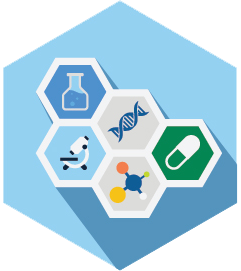
USA Microbiology Universities:
Harvard University | Massachusetts Institute of Technology | Stanford University | University of California Berkeley | California Institute of Technology | Johns Hopkins University | Cornell University | Duke University | Washington University in St. Louis | Rockefeller University of California San Francisco | Yale University | Princeton University | Scripps Research Institute University | University of California San Diego | University of Chicago | University of Wisconsin Madison | University of Michigan | University of Pennsylvania | University of Washington | North-western University | Vanderbilt University | Emory University | University of Texas | Brown University | Indiana University | University of Arizona | Ohio State University | University of Alabama | University of Pittsburgh | Michigan State University | University of Virginia | Arizona State University | Brandeis University | Georgia Institute of Technology | University of Florida | Purdue University | University of Maryland | New York University | University of Utah | University of Kansas | University of Rochester | Colorado State University | Boston University | Florida State University | Wesleyan University | Miami University | Albany Medical College
Track 02: Urinary Tract Infection (UTI)
A urinary tract infection (UTI) is a bacterial infection that alters the urinary system that produces, stores, and eliminates urine. The causative of the infection is a bacteria called Escherichia coli. Composition of urine is salts, fluids and waste produces, but does not usually have bacteria in it. Bacteria inflowing the bladder or kidney can multiply rapidly in the urine, causing a UTI (urinary tract infection). Cystitis is the most common type of UTI and mostoftenly referred to as a bladder infection. A kidney infection, also known as pyelonephritis is potentially more serious.
Infections of the bladder and/or urethra are known as lower urinary tract infections; if it occurs in the kidneys or ureters they are known as upper urinary tract infections. In general, urinary tract infections are simply and effectively treated with a short course of antibiotics. However, infection can cause uneasiness, to the patient suffering pain at the time of urination, a frequent desire to urinate, and cloudy urine. Women are more likely than men to have a UTI. This is because in women the urethra is nearer to the anus than it is in men, which makes it easier for bacteria to get from the anus to the urethra. In women the urethra is also much shorter than it is in men, making it easier for bacteria to contact the bladder. Antibiotics are used to treat UTIs. The majority cases of UTIs clear up after a few days of drug treatment, although more severe cases may require few weeks of treatment. Guidelines recommend using nitrofurantoin or trimethoprin-sulfamethoxazole as first-line antibiotic treatments for UTIs. Fluoroquinolones (such as ciprofloxacin) are now only recommended when other antibiotics are not appropriate.
European Microbiology Universities:
University of Oxford | University of Cambridge | University of Copenhagen | University College London | Imperial College London | Swiss Federal Institute of Technology Zurich | University of Zurich | Karolinska Institute | University of Munich | University of Edinburgh | Pierre and Marie Curie University | Heidelberg University | University of Manchester | Catholic University of Leuven | University of Helsinki | Freie Universitat Berlin | Utrecht University | Uppsala University | Wageningen University and Research Center | Humboldt-Universitat zu Berlin | University of Groningen | University of Barcelona | Technical University of Munich | Leiden University | University of Basel | University of Strasbourg | Ghent University | King's College London | University of Geneva | University of Dundee | Lund University | Johann Wolfgang Goethe University Frankfurt am Main| University of Gottingen | University of Freiburg | Stockholm University | University of Gothenburg | University of Sheffield | Eberhard Karls University, Tubingen | University of Padua | University of Wurzburg | University Paris-Sud | University of Vienna | University of Bristol | Free University of Brussels | University of Milan | University of Amsterdam | University of Nottingham | University of Hamburg | University of Oslo | University of Leeds | University of Birmingham | University of Southampton | University of Bern | University of Cologne | Medical University of Vienna | University of Münster | University of Lisbon | University College Dublin | University of Aberdeen | University of Liverpool | Trinity College Dublin | Delft University of Technology | Bielefeld University | University of Leipzig | Cardiff University | University of York | University of Regensburg | University of Warsaw
Track 03: Antibiotics in Our Food System
The rise of dangerous antibiotic-resistant bacteria have become a critical public health problem, fueled in part by their use in industrial animal agriculture. Since the 1940s, antibiotics have played a critical role in protecting public health, and have saved millions of lives. However, the non-therapeutic use of antibiotics by the is now responsible for the emergence of drug-resistant bacteria that pose a grave threat to public health. According to the FDA, more than 20 million pounds of medically important antibiotic drugs modern food animal industry were sold for use in food producing farm animals in 2014.
Antibiotics have been used in livestock feed since the 1940s, when studies showed that the drugs caused animals to grow faster and put on weight more efficiently, increasing meat producers’ profits. Up until the recent past, when the FDA banned the practice, non-therapeutic antibiotics — those used for purposes other than treating disease — were routinely given to livestock, poultry and fish on industrial farms to promote faster growth.
As industrial farming has spread around the world, so, too, has the use of non-therapeutic antibiotics. One study estimates that global antimicrobial consumption will grow by 67 percent by 2030, due to increasing demand for animal-based products, with countries including Brazil, India and China doubling their usage over that time period. According to the World Health Organization, antibiotic-resistance in many areas of the world already exceeds 50 percent in many major bacteria groups, including E. coli, K. pneumonia and S. aureus.
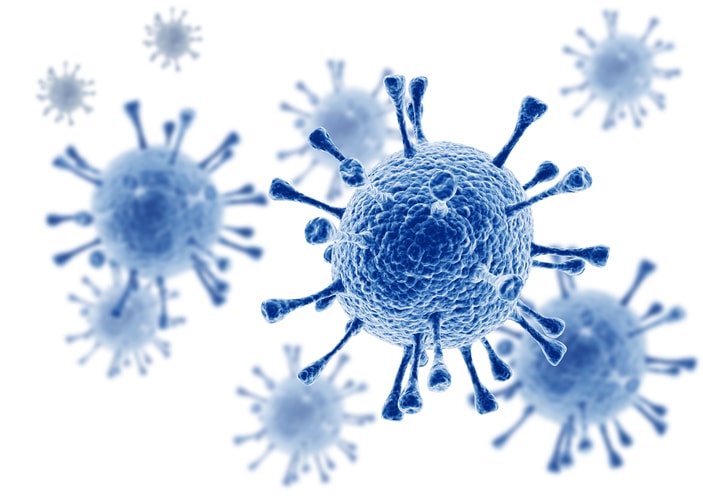
Asian Microbiology Universities:
University of Tokyo | National University of Singapore | Kyoto University | Peking University| Tsinghua University | Weizmann Institute of Science | Osaka University | Seoul National University | Shanghai Jiao Tong University | Fudan University | Zhejiang University | Tel Aviv University | Hebrew University of Jerusalem | University of Hong Kong | Tohoku University | Nanyang Technological University | Korea Advanced Institute of Science and Technology | Hokkaido University | National Taiwan University | Keio University | Shandong University | Nagoya University | Sungkyunkwan University | Yonsei University | Kyushu University | Sun Yat-sen University | Huazhong University of Science and Technology | Wuhan University | University of Science and Technology of China | Tokyo Institute of Technology | Tokyo Institute of Technology | King Abdulaziz University | Kobe University | Korea University | Pohang University of Science and Technology | Indian Institute of Science | Nankai University | Tongji University | King Saud University | Nanjing University | Harbin Institute of Technology | University of Tsukuba | Kyung Hee University | Sichuan University | Xiamen University | Chonnam National University | Jilin University | Central South University | University of Tehran | Aligarh Muslim University | Chinese University Hong Kong | University of Delhi | South China University of Technology | Waseda University | Okayama University | Southeast University | Soochow University | Mahidol University | Hiroshima University | Tianjin Medical University | Kanazawa University | Tehran University of Medical Sciences | Kumamoto University | Kyungpook National University | National Yang-Ming University | China Medical University Taiwan
Track 04: Antibiotics: Market Analysis & Business Opportunities
Antibiotics, also called antibacterials or antimicrobials, is a group of medicines used in the treatment of infections caused by germs—bacteria and certain parasites—by inhibiting the growth of microorganisms or killing them. Since the discovery of the antibiotic penicillin in 1920, various antibiotic compounds have been widely used to treat several bacterial infections. Increasing incidence of chronic and infectious diseases across the globe and efficacy of antibiotics to treat a wide spectrum of bacterial infections have led to the rapid evolution of the global antibiotic market. Based on geography, the report segments the global antibiotic markets into North America, Europe, Asia Pacific, and Rest of the World (ROW). Currently, Asia Pacific accounts for the leading share in the global antibiotic market. The region is likely to present exciting growth opportunities along the forecast period, driven by the prevalence of various infectious diseases, favorable regulatory reforms, and significant demand for generic medicines. A large number of players have been actively focusing on new drug development and clinical trials. Prominent biotechnology companies are entering into strategic alliances, which has helped them make considerable investments in drug discovery. Pharmaceutical companies are actively developing analogues of existing antibiotic classes based on innovative approaches to fight bacterial infections. Key players operating in the global antibiotic market include Pfizer Inc., Astellas Pharma, Inc, Roche, Novartis AG, Bristol-Myers Squibb Co., Bayer HealthCare AG, Abbott Laboratories, MiddleBrook Pharmaceuticals, Takeda Pharmaceutical Company, Ltd., Daiichi Sankyo Company, Ltd., GlaxoSmithKline Plc, Eli Lilly and Co., and Kyorin Pharmaceutical Co., Ltd. The antibiotics market was valued at USD 39.8 billion in 2015 and is expected to witness a CAGR of 4.0% over the forecast period. Increasing efforts are being witnessed toward the development of advanced products. According to the data published by the Pew Charitable Trust, in March 2016, about 37 promising molecules were being investigated within the U.S. market. Majority of these, are in phase II clinical trials and are anticipated to hit the market between 2018 - 2020. Furthermore, supportive government legislations, such as the Generating Antibiotics Incentives Now (GAIN) Act are expected to expedite the approval process. GAIN Act has provisions which facilitate development of therapy against antibiotic resistant pathogens.

European Microbiology Societies:
International Center for Genetic Engineering and Biotechnology | Federation of European Microbiological Societies| European Society for Clinical Virology | International Union of Microbiological Societies | European Federation of Biotechnology | European Molecular Biology Organization | European Society of Clinical Microbiology and Infectious Diseases | International Center for Genetic Engineering and Biotechnology | Italian Society of Agro-Food and Microbial Biotechnologies | Federation of European Microbiological Societies | European Molecular Biology Organization | Society for Applied Microbiology | Swiss Society for Infectious Disease | European Molecular Biology Organization | Interregional Association for Clinical Microbiology | Antimicrobial Chemotherapy
Track 05: Bacterial pathogenesis
Bacterial pathogenesis is the process by which bacteria infect and cause disease in a host. Not all bacteria are pathogens and have the ability for pathogenesis (also known as virulence). Pathogenic bacteria utilise a number of mechanisms to cause disease in human hosts. Bacterial pathogens express a wide range of molecules that bind host cell targets to facilitate a variety of different host responses. The molecular strategies used by bacteria to interact with the host can be unique to specific pathogens or conserved across several different species. A key to fighting bacterial disease is the identification and characterisation of all these different strategies. The availability of complete genome sequences for several bacterial pathogens coupled with bioinformatics will lead to significant advances toward this goal. There are several bacterial pathogenic diseases. One among them is tuberculosis which is caused by Mycobacterium tuberculosis. It includes other pathogens of bacteria such as Streptococcus and Pseudomonas. These pathogens and form of bacteria causes many foodborne illnesses and infections such as tetanus, typhoid fever and diphtheria. Microbes express their pathogenicity by means of their virulence. The determinants of virulence of a pathogen are any of its genetic or biochemical or structural features that enable it to produce disease in a host. In bacterial host mediated pathogenesis, (e.g., tuberculosis), tissue damage results from the toxic mediators released by lymphoid cells rather than from bacterial toxins.

USA Microbiology Societies:
South-eastern association for clinical microbiology | Association of medical school microbiology and immunology chairs| Society for the Advancement of Biology Education Research | Federation of American societies for experimental biology | Federation of American societies for experimental biology | American society for microbiology | Society for industrial Microbiology and biotechnology | Society for Applied Microbiology | Society for industrial microbiology | International Union of microbiological societies| Southern California Branch of the American Society for Microbiology | The American Association of Immunologists| The American Society for Clinical Investigation | International union of microbiological societies| Infectious Diseases Society of America| National Foundation for Infectious Diseases
Track 06: Antibiotic Regulatory Affairs
Ever since the discovery of antibiotics, the quality of human life greatly improved in the 20th century. The discovery of penicillin transformed the medicine industry and initiated a search for a better antibiotic every time resulting in several synthetic and semi-synthetic antibiotics. Beginning with the 1937 sulfa drug tragedy, the drug regulations had a parallel growth along with the antibiotics and the antibiotic-based generic Pharma industries. Several regulatory aspects involved with these industries have been discussed along with the complexity of the market, issues that could affect their growth, their struggle for quality, and their compliance with the tightened regulations. With the skyrocketing commercialization of antibiotics through generics and the leveraging technologic renaissance, generic industries are involved in providing maximum safer benefits for the welfare of the people, highlighting its need today.

Asian Microbiology Societies:
Pan-Pacific Surgical Association Congress| Federation of Asia-Pacific Microbiology Societies| Malaysian Society of Infectious Diseases| Singapore Society for Microbiology and Biotechnology | Malaysian Society for Microbiology | Asia Pacific Society of Clinical Microbiology and Infection | The Philippine Society for Microbiology | Asia Pacific Society for Marine Biotechnology | Committee of Asia Pacific Electron Microscopy Societies | Federation of Asia Pacific Microbiological Societies | International Union of Microbiological Societies | Microscopy Society (Singapore) | Singapore National Academy of Sciences | Japanese Society of Microbial Ecology
Track 07: Pharmacology of antibiotics
The term antibiotic is now generally used to include antimicrobial substances produced by chemical means as well as those produced by micro-organisms. They may be either bacteriostatic or bacteriocidal. A bacteriostatic antibiotic inhibits the growth and replication of bacteria thereby giving the body's natural defence mechanisms time to become effective in overcoming an infection. In the majority of cases, and particularly in patients whose natural resistance is lowered by disorders of the immune system, it is preferable to choose a bacteriocidal agent. The first bacteriocidal antibiotic was penicillin G. Knowledge of how the body handles a drug, in particular an understanding of absorption, distribution and excretion, helps to provide rational dose regimes which give therapeutic concentrations but keep adverse reactions to a minimum. The two important features of the structure of penicillin are the (3-lactam ring and the side-chain. Alterations in the side-chain give rise to differences in resistance to gastric acid and variation in antibacterial spectrum. In general, increasing the length of the side-chain increases resistance to gastric acid and increases the antibacterial spectrum.

Microbiology Journals Asia:
Journal of Microbiology,Immunology and Infection | Japanese Journal of Infectious Diseases | Indian Journal of Medical Microbiology | Indian Journal of Pathology and Microbiology | Japanese Journal of Antibiotics| Chinese Journal of Endemiology | Malaysian Journal of Microbiology | Chinese Journal of Infection and Chemotherapy | Journal of Microbiology | Indian Journal of Microbiology | Journal of General and Applied Microbiology | Journal of Microbial and Biochemical Technology | Korean Journal of Microbiology and Biotechnology | Journal of Bacteriology and Virology | Japanese Journal of Medical Mycology | Chinese Journal of Microbiology and Immunology | Japanese Journal of Bacteriology
Track 08: Antibiotic Resistance
Antibiotic resistance is the ability of bacteria to resist the effects of an antibiotic. Antibiotic resistance occurs when bacteria change in a way that reduces the effectiveness of drugs, chemicals, or other agents designed to cure or prevent infections. The bacteria survive and continue to multiply, causing more harm. Antibiotic resistance has been called one of the world’s most pressing public health problems. Antibiotic resistance can cause illnesses that were once easily treatable with antibiotics to become dangerous infections, prolonging suffering for children and adults. Antibiotic-resistant bacteria are often more difficult to kill and more expensive to treat. In some cases, the antibiotic-resistant infections can lead to serious disability or even death. Antibiotics are not effective against viral infections like the common cold, flu, most sore throats, bronchitis, and many sinus and ear infections. Widespread use of antibiotics for these illnesses is an example of how overuse of antibiotics can promote the spread of antibiotic resistance. Smart use of antibiotics is key to controlling the spread of resistance. Bacteria can become resistant to antibiotics through several ways. Some bacteria can “neutralize” an antibiotic by changing it in a way that makes it harmless. Others have learned how to pump an antibiotic back outside of the bacteria before it can do any harm. Some bacteria can change their outer structure so the antibiotic has no way to attach to the bacteria it is designed to kill. After being exposed to antibiotics, sometimes one of the bacteria can survive because it found a way to resist the antibiotic. If even one bacterium becomes resistant to antibiotics, it can then multiply and replace all the bacteria that were killed off. That means that exposure to antibiotics provides selective pressure making the surviving bacteria more likely to be resistant. Bacteria can also become resistant through mutation of their genetic material.

Microbiology Journals US:
Annual Review of Microbiology | PLoS Pathogens| Infection and Immunity | Gut Microbes | Journal of Bacteriology | Food Microbiology | Fungal Genetics and Biology | Tuberculosis| EcoSal Plus| Foodborne Pathogens and Disease | Microbial Drug Resistance | Vector-Borne and Zoonotic Diseases | Journal of Food Protection | Microbiology and Immunology | Current Protocols in Microbiology | Probiotics and Antimicrobial Proteins | Annals of Clinical and Laboratory Science | Molecular Genetics, Microbiology and Virology | Research Journal of Microbiology | Oxford Medical Case Reports| Internet Journal of Microbiology
Track 09: Bacterial vaginosis
Bacterial vaginosis is an abnormal vaginal condition that is characterized by vaginal discharge and results from an overgrowth of atypical bacteria in the vagina. It is not a true bacterial infection but rather an imbalance of the bacteria that are normally present in the vagina. Usually treatment is with an antibiotic, such as clindamycin or metronidazole. BV is the most common vaginal infection in women of reproductive age. In the United States about 30% of women between the ages of 14 and 49 are affected. BV is linked to an imbalance of “good” and “harmful” bacteria that are normally found in a woman’s vagina. Bacterial vaginosis results from overgrowth of one of several bacteria naturally found in your vagina. Usually, "good" bacteria (lactobacilli) outnumber "bad" bacteria (anaerobes). But if there are too many anaerobic bacteria, they upset the natural balance of microorganisms in your vagina and cause bacterial vaginosis. BV is a polymicrobial clinical syndrome resulting from replacement of the normal hydrogen peroxide producing Lactobacillus sp. in the vagina with high concentrations of anaerobic bacteria (e.g., Prevotella sp. and Mobiluncus sp.), G. vaginalis, Ureaplasma, Mycoplasma, and numerous fastidious or uncultivated anaerobes. Some women experience transient vaginal microbial changes, whereas others experience them for longer intervals of time.

Microbiology Asian Conferences:
6th Annual Bacteriology and Parasitology Meeting, Sep 13-14, 2017 Singapore | 4th International Conference on Chronic Obstructive Pulmonary Disease (COPD), May 29-31, 2017 Japan | Bacteriology & Applied Microbiology August 20-21, 2018 Singapore | 3rd International Conference on Applied Microbiology and Beneficial Microbes June 6-7, 2018 Osaka, Japan
Track 10: Food Poisoning Bacteria
Listeria bacteria can contaminate fresh produce, like cantaloupes, as well as some processed foods, like cheeses. Symptoms of infection include fever, muscle aches, upset stomach, or diarrhea. Salmonella bacteria can taint any food, although there's a greater risk from animal products because of contact with animal feces. In chickens, it can infect eggs before the shell forms, so even clean, fresh eggs may harbor salmonella. E. coli lives in the intestines of cattle and can contaminate beef during the slaughtering process. Ground beef is especially risky, because the bacteria can spread when meat is ground up. Symptoms of E. coli infection include severe abdominal cramps, watery diarrhea, and vomiting. The illness typically develops several days after exposure and can be severe in vulnerable people. Clostridium perfringens is a type of bacteria that causes cramps and diarrhea lasting less than 24 hours. Stews, gravies, and other foods that are prepared in large quantities and kept warm for a long time before serving are a common source of C. perfringens infections. Vibrio vulnificus is a bacteria that lives in warm seawater and can contaminate shellfish, particularly oysters. V. vulnificus infection causes the same gastrointestinal symptoms as many other foodborne illnesses, but in people with weakened immune systems it can develop into a life-threatening blood infection. Salmonella is an extremely common type of bacteria. These rod-shaped organisms can be found in both cold-blooded and warm-blooded animals across the world. They are also one of the most common causes of sickness in human beings. Salmonella poisoning can infect people in one of two ways. It is most often spread from animals to people through the food supply. This is how the bacteria can cause the nauseating disease gastroenteritis.

Microbiology Europe Conferences:
10th Edition of International Conference on Advanced Microbiology & Education, June 14-16, 2018 London, UK | 8th Edition of International Conference on Infectious Diseases, June 07-08, 2018, London, UK | 22nd Edition of International Conference on Immunology and Evolution of Infectious Diseases, May 10-11, 2018 Frankfurt, Germany | 10th International Virology Congress July 02-04, 2018, Vienna, Austria | 16th International Pharmaceutical Microbiology and Biotechnology Conference, May 21-23, 2018 Vienna, Austria | Microbial physiology 2018, July 16-18, 2018 London, UK | 13th International Congress on Microbial Interactions and Applications of Beneficial Microbes July 19-20, 2018 Rome, Italy | 47th World Congress on Microbiology September 10-11, 2018 London, UK | 9th International Summit on Clinical Microbiology October 08-09, 2018 Zurich, Switzerland
Track 11: Bacterial infections
Bacterial infections can cause a variety of conditions. Infections occur as bacteria enter the body or grow on the skin. Treatment for bacterial infection include taking medication. Common drug classes used to treat bacterial infections are penicillin antibiotics, quinolone antibiotics, macrolide antibiotics, cephalosporin antibiotics, tetracycline antibiotics, lincosamide antibiotics, nitroimidazole antibiotics, sulfa antibiotics, polypeptide antibiotics, oxazolidinone antibiotics, penem antibiotics, glycopeptide antibiotics, and monobactam antibiotics. Sepsis is the body’s often deadly response to infection. Sepsis kills and disables millions and requires early suspicion and treatment for survival. Sepsis can result from an infection anywhere in the body, such as pneumonia, influenza, or urinary tract infections. Bacterial infections are the most common cause of sepsis. Worldwide, one-third of people who develop sepsis die. Many who do survive are left with life-changing effects, such as post-traumatic stress disorder (PTSD), chronic pain and fatigue, organ dysfunction (organs don’t work properly) and/or amputations. Bacteria must enter your body for them to cause an infection. So you can get a bacterial infection through an opening in your skin, such as a cut, a bug bite, or a surgical wound. Bacteria may also enter your body through your airway and cause infections like bacterial pneumonia. Other types of bacterial infections include urinary tract infections (including bladder and kidney infections) and dental abscesses, as well as infections caused by MRSA, Group B Streptococcus, and C. Difficile.
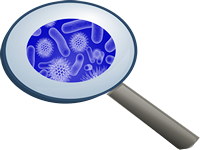
Microbiology USA Conferences:
35th UC Davis Annual infectious diseases conference, Feb 03-04, 2017 USA | 7th Annual Conference on Microbiology September 28-29, 2018 San Antonio, Texas, USA | 2nd International congress on Nosocomial and Healthcare Associated Infections October 15-16,2018 Las Vegas, Nevada, USA | 2nd Annual Conference on Microbes and Beneficial Microbes September 28-29, 2018 San Antonio, USA | 3rd Global Medical Microbiology Summit & Expo November 07-08, 2018 Alabama, USA | 13th World Congress on Virology December 3-4, 2018 Chicago, Illinois, USA | 3rd International Conference on Flu and Emerging Infectious Disease November 07-08, 2018 Alabama, USA
Track 12: Antibiotics in Oncology
Cancer patients develop neutropenia, a decrease in the subset of leucocytes responsible for protection against bacteria, as a result of chemotherapy or cancer. Neutropenia predisposes the patients to severe bacterial infections. Standard antibiotic regimens for cancer patients with neutropenia and fever are directed at most of the bacteria that can cause infections. However, a subset of resistant bacteria belonging to the gram-positive group (Staphylococcus aureus and Streptococci) remain untreated unless specific antibiotics are added to the treatment. For patients receiving chemotherapy, there is an increased risk of infection due to a low white blood cell count (neutropenia) caused by a toxic effect of chemotherapy on the bone marrow. Antibiotic prophylaxis significantly decreased the risk of death when compared to no intervention. Antibiotic prophylaxis also decreased the risk of death from infection and the risk of development of fever.

Microbiology Job Opportunities:
Microbiology Research Scientist – Microbiology Dyson | Research Microbiologist Lonza | Food Safety Microbiological Specialist Britvic Soft Drinks Ltd | Johnson & Johnson Family of Companies | Postdoctoral Research Associate in Microbial Fermentation University of Reading , PhD Studentship: Antimicrobials & Antimicrobial Resistance University of N0ham | Senior scientists, antibody discovery and protein engineering | Microbiologist - Environmental Monitoring | QC analyst – Microbiology Liverpool, England | Equipment Management Associate - Harrogate, UK | Senior Biomedical Scientist (Microbiology) England | Microbiology Laboratory Technician South East | Technical Manger - Microbiology- Water Testing - SE London | [Microbiologist/Biochemist] Plate Coating Scientist (Microtiter) | Microbiologist - Environmental Monitoring | PhD / Senior Microbiologist for Science Solutions Recruitment Ltd | Microbiology Technical Specialist - Home Based | Microbiology Lab Manager for Chain Biotech | Senior Microbiologist in Dun Laoghaire | Microbiology Quality Manager Vivid Resourcing London | Microbiology - Associate Director Pharmaceutical Industry London | Microbiology Technician for Clinical Professionals UK | Plant Microbiologist Cork, Ireland | Senior Microbiologist (Team Leader) ABERDEEN - United Kingdom | QC Micro Analyst Scotland, UK | Research Scientist - Microbiologist Supervisor New Brunswick, NJ, USA | Sr Microbiologist Danvers, MA United States | QC/QA Microbiologist cheshire, Manchester, North West England | Microbiologist Matchtech East Riding of Yorkshire, England
Track 13: Anticancer Antibiotics
Laboratory-produced drugs used to target and destroy cancerous cells. Therapeutic anticancer antibiotics have become an accepted treatment for certain types of cancer. These drugs bind specifically to primary and metastatic cancer cells to block cell growth, while limiting effects on surrounding healthy cells. Also called antitumor antibiotics, anticancer antibiotics can also be used to treat or prevent infections brought on by cancer treatments. Any anticancer drug that affects DNA synthesis and replication by inserting into DNA or by donating electrons that result in the production of highly reactive oxygen compounds (superoxide) that cause breakage of DNA strands. These antibiotics are administered almost exclusively by intravenous infusion for the treatment of lymphoma and leukemia, nephroblastoma (Wilm tumour), sarcoma, and cancers of the testicle, the breast, the thyroid, the lung, and the stomach.

Track 14: Naturopathy for Bacterial Infections
Ayurvedic treatments have a good reputation because of the fewer side effects caused by them and also these are naturally available products and so it is not synthetically made which leads to no carcinogens in the ayurvedic products. Herbal remedies for bacterial infections comprise Aloe Vera, Neem, Barberry, Goldenseal, Garlic, Cinnamon, Thyme, Cloves, Cayenne Pepper, Horseradish, Cumin, Oregano, Basil, Rosemary, Lavender, Tea Tree, Nutmeg and Peppermint. Most of these herbs destroy the disease causing bacteria. Some herbs such as Echinacea combine antibacterial properties with immunostimulatory action. Herbal remedies which can cure bacterial infections with ease and efficacy. When antibiotics are used for a long time, it makes the disease causing microorganisms develop a defence against the action of these medicines, thereby, becoming totally unresponsive to medicines. This issue is becoming a huge concern for entire humanity that is threatening the validity and effectiveness of modern medicines. Ayurveda understands the delicate balance of nature and deals with diseases by taking a natural and balanced approach. Immunomodulatory rasayans in Ayurvedic medicines strengthen the body’s innate defence mechanism to fight diseases. As a result, disease causing microbes do not become drug resistant. Ayurvedic treatment is also safe for the gut microbiota and does not damage it. In addition to these obvious benefits, Ayurvedic treatment also acts on the root-cause rather than on symptoms. The ayurvedic products from the plants are rich in a wide variety of secondary metabolites which include flavonoids, tannins, alkaloids. These compounds are found to antimicrobial in nature. In Ayurveda, many herbal plants are used in treating bacterial infection and infectious diseases. Solvents extracts from certain herbal include Ajmodadi churna, Mahasudarshan churna, Triphala churna is found to have antibacterial properties against some bacterial pathogens include Staphylococcus aureus, Enterobacter aerogens, etc.

Track 15: Toxicity of antibiotics
The discovery of penicillin followed by streptomycin, tetracycline, cephalosporins and other natural, semi-synthetic and synthetic antimicrobials completely revolutionized medicine by reducing human morbidity and mortality from most of the common infections. The efficiency of antimicrobial treatment is determined by both pharmacokinetics and pharmacodynamics. In spite of their selective toxicity, antibiotics still cause severe, life-threatening adverse reactions in host body mostly due to defective drug metabolism or excessive dosing regimen. Toxicity of antibiotics as well as antibiotic resistance mechanisms, resistome analyses and search for novel antibiotic resistance determinants with special emphasis given to the-state-of-the-art regarding multidrug efflux pumps and their additional physiological functions in stress adaptation and virulence of bacteria.

Track 16: Clinical Bacteriology
Bacterial pathogens are a major cause of infectious diseases. It is important to be able to identify them in patients in order to provide an effective treatment. The subject explores topics such as identification and quantitative methods, possible automation of the techniques or efficiency of available treatments while providing a clinical knowledge. The studies cover notably staphylococci, streptococci, corynebacteria, mycobacteria, neisseria, enteric bacteria, pasteurellae, pseudomonads and spirochaetes and their mechanisms of action in the context of the disease they cause. Available treatments are explored through the study of the different families of antibiotics, along with the possible resistance mechanisms they can develop and how they can be identified. The main aim of clinical bacteriology is to diagnose the disease by using specimens. These specimens may be urine, feces, body fluids, tissue etc. Manual testing is done by using this specimen to find out the infectious disease. The infectious diseases were mainly caused by the bacteria like s.pneumonia, h.pylori, t.palladium, l.borreliosis. Clinical bacteriology concerns of detection, prevention of infectious disease and to study the characteristic of the pathogen.

Track 17: Bacterial Biochemistry
Bacteria is made up of three domains of life .Unlike eukaryotes, bacteria has nucleoids instead of nuclei. The bacterial cell wall is made up of peptidoglycan. And it is found in tissue of other organisms, soils, or water surfaces. It has specific structural characteristics including a cell envelope, ribosomes, nucleoid, pili, and flagella. It is also used to produce food, such as yoghurt. Bacteria is also used in the fields of biotechnology and gene therapy due to their possession of circular DNA called plasmids, in which it contain the genes that encode antibiotic resistance. The basic and metabolic highlights about some of these are obscure. Numerous microscopic organisms frame cooperative relationship with eukaryotes and are in this way of worry in medication and agriculture. Proteobacteria and cyanobacteria are the most essential phyla in worldwide biology and human issues. The cell divider in microbes fills in as a physical boundary between the cell and its environment. The inflexibility of the cell wall is because of Peptidoglycan is exceptional to the cell dividers of microorganisms, as eukaryotic cell dividers are for the most part made of chiten or cellulose,and archaea bacteria have cell walls composed of other polysaccharides and proteins. And the cell wall of bacteria contains 2 categorie; Gram-positive and Gram-negative, named after the gram strain test.
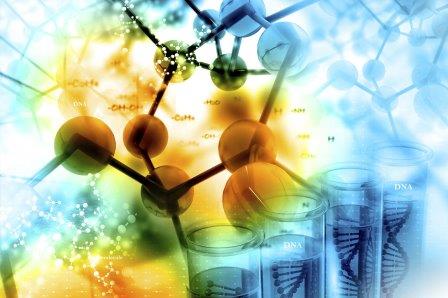
Track 18: Bacterial Genomics
Bacterial genomics is a scientific discipline that concerns the genome, encompassing the entire hereditary information, of bacteria. Bacterial genomics can, for example, be used to study bacterial evolution or outbreaks of bacterial infections. All living organisms contain DNA. This amazing macromolecule encodes all of the information needed to program the cell's activities including reproduction, metabolism and other specialized functions. The human genome is comprised of 23 pairs of linear chromosomes, and approximately 3000 megabases (Mb) of DNA, while the genome of the bacterium Escherichia coli consists of a single 4.6 Mb circular chromosome. By studying the genomes of bacteria we are able to better understand their metabolic capabilities, their ability to cause disease and also their capacity to survive in extreme environments. Many of the well-studied bacterial model organisms, such as E. coli, have a single circular chromosome. However, advances in molecular genetics have shown that bacteria possess more complex arrangements of their genetic material than just a single circular chromosome per cell. Some bacterial genomes are comprised of multiple chromosomes and/or plasmids and many bacteria harbor multiple copies of their genome per cell. During the last decade, great advances have been made in the study of bacterial genomes which is perhaps better described by the term bacterial genomics. The application of powerful techniques, such as pulsed-field gel electrophoresis of macro-restriction fragments of genomic DNA, has freed the characterisation of the chromosomes of many bacteria from the constraints imposed by classical genetic analysis. It is now possible to analyse the genome of virtually every microorganism by direct molecular methods and to construct detailed physical and gene maps.

Track 19: Bacteriology in Public Health
The Public Health and bacteriology concentration includes studies in bacterial pathogenesis, principles of public health, epidemiology, molecular genetics, and environmental and industrial bacterial processes. Bacteriology of Public Health deals with public health hygiene. Public health refers to the science of all organized measures protecting and improving health of communities and populations locally and globally and to promote health, prevent disease as a whole through healthy life styles, promotion of research for disease, detection and control of bacterial diseases. Public health bacteriology aims to interpret diagnostics at the population level, rather than at the level of the individual patient. Outbreaks of infectious diseases such as Zika and Ebola, alongside increased concerns regarding antibiotic resistance, highlight the need for professionals who fully understand the role of microorganisms in public health in order to respond to such threats. It focuses on the science of bacteria, microorganisms and the range of strategies employed for public health protection, including epidemiology, public health intelligence, vaccination, antimicrobial chemotherapy, diagnostic microbiology and outbreak investigation.

Track 20: Medical Bacteriology and Immunology
Medical Bacteriology and Immunology covers all aspects of the interrelationship between bacterial agents and their hosts. Immunology studies the functions, mechanisms and significance of human defence systems in various disease conditions. Very day of our lives, we are exposed to microbes such as bacteria, viruses, and parasites. The single system in the body that allows life to continue in the face of these assaults is the immune system. The immune system is the network of cells and their biological processes that enable the body to recognize diseased cells or the invasion by microorganisms (bacteria, viruses, parasites, and prions) and eliminate them. Collectively, these two disciplines address how humans and other mammals respond to bacterial disease.
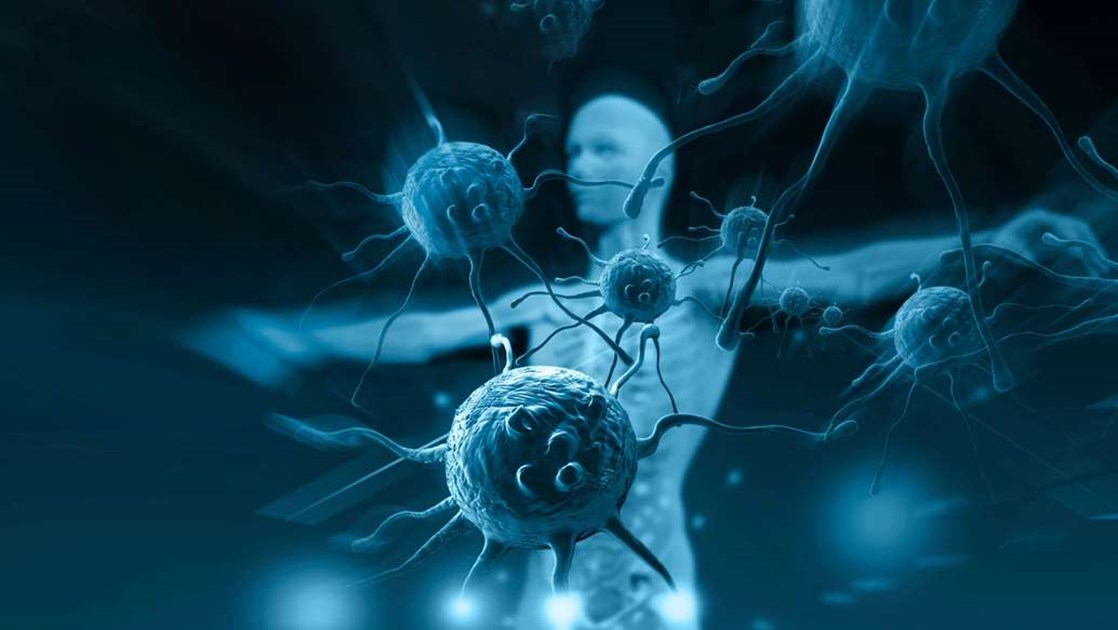
Track 21: Bacterial Vaccine
Vaccine development is a priority for global health due to the growing multidrug resistance in bacteria. Bacterial vaccines contain killed or attenuated bacteria that activate the immune system. Antibodies are built against that particular bacteria, and prevents bacterial infection later. An example of a bacterial vaccine is the Tuberculosis vaccine. Bacterial Vaccines provides information dealing with vaccination of man against bacterial diseases. A saline solution suspension of a strain of attenuated or killed bacteria prepared for injection into a patient to stimulate development of active immunity to that strain and against similar bacteria.

Track 22: Antibiotics in Chronic Respiratory Diseases
Antibiotics are commonly used in the management of respiratory disorders such as cystic fibrosis (CF), non-CF bronchiectasis, asthma and COPD. In those conditions long-term antibiotics can be delivered as nebulised aerosols or administered orally. In CF, nebulised colomycin or tobramycin improve lung function, reduce number of exacerbations and improve quality of life (QoL). Oral antibiotics, such as macrolides, have acquired wide use not only as anti-microbial agents but also due to their anti-inflammatory and pro-kinetic properties. In CF, macrolides such as azithromycin have been shown to improve the lung function and reduce frequency of infective exacerbations. Similarly macrolides have been shown to have some benefits in COPD including reduction in a number of exacerbations. In asthma, macrolides have been reported to improve some subjective parameters, bronchial hyperresponsiveness and airway inflammation; however have no benefits on lung function or overall asthma control. Macrolides have also been used with beneficial effects in less common disorders such as diffuse panbronchiolitis or post-transplant bronchiolitis obliterans syndrome.
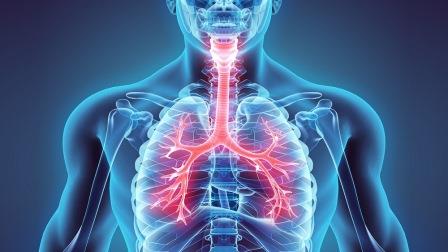
Track 23: Alternatives to Antibiotics
The antibiotic resistance problem is caused by the evolution and transfer of genes that confer resistance to medically important antibiotics into human pathogens. The acquisition of such resistance genes by pathogens complicates disease treatment, increases health care costs, and increases morbidity and mortality in humans and animals. As antibiotic resistance continues to evolve, antibiotics of so-called last resort become even more precious. Reducing or preventing the dissemination of antibiotic resistance genes into human pathogens is currently of high international importance. First, more than 70 years of antibiotic use have already selected for diverse and highly mobile antibiotic resistance genes in human pathogens and related bacteria. These resistant bacteria spread in the environment via water, air, wildlife, and humans, so targeted mitigation strategies are needed to decrease the environmental dissemination of antibiotic-resistant bacteria from “hot spots” of potential resistance development. Second, highly mobile resistance genes can be horizontally transferred from one bacterium to another. Resistance gene transfer events can be stimulated by antibiotics themselves. Therefore, prudent use of antibiotics is one potential mitigation strategy to slow the spread of resistance genes among bacteria. The use of antibiotic alternatives to promote health and reduce disease will decrease antibiotic use, thereby decreasing selective pressure for the emergence and transmission of antibiotic-resistance genes.

Track 24: Medical Use of Antibiotics
Antibiotics, also known as antibacterials, are medications that destroy or slow down the growth of bacteria. Antibiotics are powerful medicines that fight certain infections and can save lives when used properly. They either stop bacteria from reproducing or destroy them. Before bacteria can multiply and cause symptoms, the immune system can typically kill them. White blood cells (WBCs) attack harmful bacteria and, even if symptoms do occur, the immune system can usually cope and fight off the infection. They include a range of powerful drugs and are used to treat diseases caused by bacteria. A doctor prescribes antibiotics for the treatment of a bacterial infection. It is not effective against viruses.
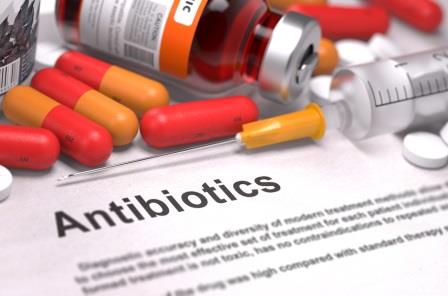
Track 25: Next-Generation Antibiotics
The increasing fear of drug-resistant superbugs is leading to a growing push for the next generation of antibiotics. The development of new antibiotics is crucial to controlling current and future infectious diseases caused by antibiotic-resistant bacteria. The discovery of a new antibiotic called teixobactin was announced by international team of researchers in 2017. The researchers now plan on studying the bacteria and decide what tools might be able to control its behavior to release its full antibiotic potential.
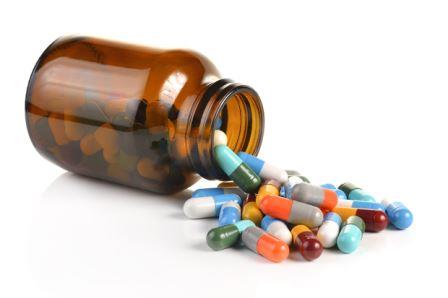
Track 25: Antibiotic Prophylaxis
Antibiotic prophylaxis is the use of antibiotics before surgery or a dental procedure to prevent a bacterial infection. However, antibiotic prophylaxis is still used in people who have certain risk factors for bacterial infection. The most common antibiotics used before surgeries are cephalosporins, such as cefazolin and cefuroxime. People who may need antibiotic prophylaxis usually have factors that put them at higher risk of infection during surgery than the general population.
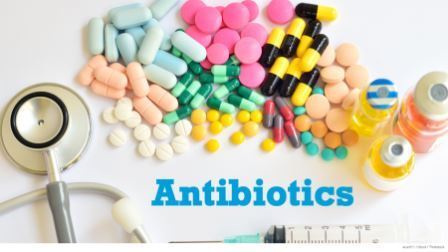
Track 26: Microbial Pathogenesis
Microbial Pathogenesis is the study of the molecular mechanisms used by microbes to cause disease in humans and animals. Bacterial, protozoan, fungal and viral pathogens have evolved a wide variety of tools to establish themselves in the host and gain nutrients, which also cause damage and disease. Other mechanisms of pathogenesis include host defence evasion. To understand the complex processes used by microbial pathogens, microbiologists employ all the tools of modern molecular biology, genetics, biochemistry and biophysics. Understanding how microbes cause disease is often the first step toward the development of new therapeutic approaches.
Microorganisms and viruses can also interact with host cells to induce alterations in cellular phenotype and function in order to subvert host cell metabolism to meet their own needs. Some microbes and viruses exert effects on the host immune response in order to evade host immune control. Understanding the interplay between infectious pathogens and their host cells is important in order to identify potential new targets for drug therapy.
Track 27: Bacteriology of dental infections
The most common dental diseases, periodontal disease and dental caries, are chronic infections caused by bacteria of normal oral flora. When these bacteria increase in number and irritation exceeds the host defence threshold, disease arises. The human oral flora comprises more than 300 different bacteria. During the last decade approximately 10 species, mainly Gram-negative anaerobes, have been noted as putative pathogens in periodontal disease. The Gram-positive and facultatively anaerobic mutans streptococci are aetiologically the most important bacteria in dental caries. Chronic dental infections have been the focus of renewed interest because of recent advances in oral microbiology as well as in medicine. Oral bacteria may spread into the blood stream through ulcerated epithelium in diseased periodontal pockets and cause transient bacteraemias, which are regarded as increased risk, especially for immunocompromised patients or persons with endoprotheses. In these patients, routine antibiotic prophylaxis is recommended for invasive dental care procedures.
Track 28: Epidemiology of Emerging Infectious Diseases & Public Response Planning
Occupational epidemiology is of great importance in clinical epidemiology and of occupational hygiene since it provides powerful and good information to understand the causes and determinants of work related ill-health, to help establish what steps should be taken to reduce occupational risks, and to evaluate interventions for the benefits of workers, and of the community in a bigger manner. Many organisms live in and on our bodies which are normally harmless or even helpful, but under certain conditions, some organisms may cause disease. Some infectious diseases can be passed from person to person.
It introduces the basic methods for infectious disease epidemiology and case studies of important disease syndromes, bacterial Infection and entities. Methods include definitions and nomenclature, outbreak investigations, disease surveillance, case-control studies, cohort studies, laboratory diagnosis, molecular epidemiology, dynamics of transmission, and assessment of vaccine field effectiveness. Case-studies focus on acute respiratory infections, diarrheal diseases, hepatitis, HIV, tuberculosis, sexually transmitted diseases, malaria, and other vector-borne diseases. The IDD market is poised to reach $18,156.2 million by 2019 from $12,422.8 million in 2014, at a CAGR of 7.9% from 2014 to 2019.
Neisseria is a large genus of bacteria that colonize the mucosal surfaces of many animals. Of the 11 species that colonize humans, only two are pathogens, N. meningitidis and N. gonorrhoeae. Most gonoccocal infections are asymptomatic and self-resolving, and epidemic strains of the meningococcus may be carried in >95% of a population where systemic disease occurs at <1% prevalence.
Meningitis is an acute inflammation of the protective membranes covering the brain and spinal cord, known collectively as the meninges. The inflammation may be caused by infection with viruses, bacteria, or other microorganisms, and less commonly by certain drugs. Meningitis can be life threatening because of the inflammation's proximity to the brain and spinal cord. The common symptoms are headache and neck stiffness associated with fever, confusion or altered consciousness, vomiting, and an inability to tolerate light (photophobia) or loud noises (phonophobia).There are about 464,000 deaths in 1990 and 303,000 deaths in 2013.
Track 29: Bacterial Diagnosis and Identification Methods
Identification is the practical application of taxonomic knowledge. The control of microbial nutrition and microbial growth involves microscopy of microbes and sterilization, disinfection, sanitization processes or use of chemical agents and applied bacteriology and Veterinary Clinical Sciences. Pathogenic microorganisms are microbes which are capable of causing disease when enters into the body which can spread through water, air, soil and also through physical contact.
For the Diagnosis of pathogenic microorganisms, the direct examination and techniques includes Immunofluorescence, immuno-peroxidase staining, and other immunoassays may detect specific microbial antigens. In molecular medicine generally Genetic probes identify genus- or species-specific DNA or RNA sequences. Mostly bacteria’s are harmless and beneficial but some are pathogenic. Dichotomous keys and diagnostic tables form the backbone of everyday identification, Standardization of methods for characterizing tests, the development of multiple inoculation apparatus, and the use of mass cultures will enable more reliable tests to be carried out and more strains to be tested. There are rapid methods for bacterial identifications for mycobacteria confirmations, and tracks contaminant sources of all pathogenic, indicators, spoiler organisms, and other environmental isolates using the latest technologies. The global microbial identification market is estimated at $896.5 million by the end of 2014 and is expected to grow at a CAGR of 5.9% from 2014 to 2019, to reach $1,194.1 million by 2019.
Track 30: Clinical Studies & Case Reports
Clinical Reviews of infectious diseases and Clinical bacteriology supports the diagnosis of disease using laboratory testing of blood, tissues, and other body fluids. There are types of specimens used clinical pathology. They are blood, urine, sputum, faeces, and other body fluids, in which it deals with health care, especially the diagnosis and treatment of disorders affecting the female reproductive system.
The market is segmented on the basis of geography, such as, North America, Europe, Asia-Pacific and Rest of the World. At present, North America and Europe are the most prominent markets, owing to growing prevalence of various gram-positive bacterial infections and associated diseases. However, Asia-Pacific and some countries in Rest of the World region are expected to show lucrative growth in upcoming period, owing to rapidly growing prevalence and awareness about the diseases caused due to gram-positive bacteria and their chronic effects.
The value of microbials and microbial physiology microbials market is projected to increase to $4,456.37 million by 2019 at a CAGR of 15.3% from 2014. The market is expected to show a prominent growth during the forecast period 2014 – 2020.
Track 31: Multi Pathogen Infections & Interactions
Diagnostic Pathology involves with examination of body tissues and their examination. Microscopical study of abnormal tissue development, disease determination, histopathology of lesions and sometimes post-mortem. It does research on critical diagnosis in surgical pathology. Many diseases are associated with bacterial infections. A pathogen predisposes to diseases states but may not cause disease. It may cause disease only in combinations (toxins exposure).Any disease causing gene that reduces survival and reproduction will eliminate itself over a number of generations therefore genetic diseases are self-extinguishing. For example, genes that encode sickle cell anaemia are maintained and persist down generations, as these genes protect against malaria, which kills millions worldwide every year. About 70% deaths in US results from chronic diseases and the treatment accounting 75% of all US healthcare costs (amounting to $ 1.7 trillion in 2009).
Track 32: Advances in Antimicrobials, Vaccines and therapeutics
Anti-microbial is the agent that kills or restricts the bacterial growth. To fight against the potential bacteria now-a-days, the manufacturing companies are coming up with more advanced anti-microbial liquids/soaps/sanitizers.
Immunization/Vaccination is one of the most cost-effective public health interventions to date, saving millions of lives and protecting countless children from illness and disability. As a direct result of immunization, polio is on the verge of eradication. Deaths from measles, a major child killer, declined by 71 per cent worldwide and by 80 per cent in sub-Saharan Africa between 2000 and 2011.2 And 35 of 59 priority countries have eliminated maternal and neonatal tetanus.
Immunization has not yet realized its full potential, however. As of end-2013, 21.8 million children under 1 year of age worldwide had not received the three recommended doses of vaccine against diphtheria, tetanus and pertussis containing vaccine (DTP3), and 21.6 million children in the same age group had failed to receive a single dose of measles-containing vaccine. Given an estimated annual cohort of 133.6 million surviving infants, an additional 11.2 million children would need to have been reached during 2013 to attain 90% DTP3 coverage globally.
In the spring of 2009, a new flu virus spread quickly across the United States and the world. The first U.S. case of H1N1 (swine flu) was diagnosed on April 15, 2009. By April 21, the Centers for Disease Control and Prevention (CDC) was working to develop a vaccine for this new virus. On April 26, the U.S. government declared H1N1 a public health emergency.
Track 32: MRSA
Methicillin-resistant Staphylococcus aureus (MRSA) is a bacterium that causes infections in different parts of the body. It's tougher to treat than most strains of staphylococcus aureus because it's resistant to some commonly used antibiotics.
The symptoms of MRSA depend on where you're infected. Most often, it causes mild infections on the skin, like sores or boils. But it can also cause more serious skin infections or infect surgical wounds, the bloodstream, the lungs, or the urinary tract.
Though most MRSA infections aren't serious, some can be life-threatening. Many public health experts are alarmed by the spread of tough strains of MRSA. Because it's hard to treat, MRSA is sometimes called a "super bug."
Most MRSA infections occur in people who've been in hospitals or other health care settings, such as nursing homes and dialysis centers. When it occurs in these settings, it's known as health care-associated MRSA (HA-MRSA). HA-MRSA infections typically are associated with invasive procedures or devices, such as surgeries, intravenous tubing or artificial joints.
Another type of MRSA infection has occurred in the wider community — among healthy people. This form, community-associated MRSA (CA-MRSA), often begins as a painful skin boil. It's spread by skin-to-skin contact.
Track 33: Bacterial physiology
Bacterial physiology is a scientific discipline that concerns the life-supporting functions and processes of bacteria, which allow bacterial cells to grow and reproduce. Experiments are performed in order to obtain information about physical and chemical factors that affect bacterial cell growth and death, bacterial nutrition, metabolism, replication and other aspects of bacterial physiology. This research provides insight about the treatment of bacterial disease and use of bacteria in biotechnology.
Track 34: Plant Bacteriology
Plant bacteriology involves the scientific study of bacteria identification, disease etiology, disease cycles, economic impact, epidemiology of plant diseases, plant disease resistance, the way in which plant diseases affect humans and animals. Some bacteria causes a small proportion of plant diseases, this does not mean that these diseases are unimportant. Pathogenic tests can be done for the prevention of disease.
Track 35: Bacterial Ecology
Bacterial ecology is defined as the interaction between bacteria and with their environment. Bacterial ecology is concerned with the interactions between bacteria and their biological and nonbiological environments and with the role of bacteria in biogeochemical element cycling. Many fundamental properties of bacteria are consequences of their small size. Thus, they can efficiently exploit very dilute solutions of organic matter and their potential growth rates are very high. Bacteria do not have a cytoskeleton and they are covered by a rigid cells wall. Therefore they can only take up dissolved lowâ€molecularâ€weight compounds from their surroundings; when bacteria exploit polymeric compounds these must first be undergo extracellular hydrolysis. Bacteria have a great diversity with respect to types of metabolism that far exceeds the metabolic repertoire of eukaryotic organisms. Bacteria play a fundamental role in the biosphere and certain key processes such as, for example, the production and oxidation of methane, nitrate reduction and fixation of atmospheric nitrogen are exclusively carried out by different groups of bacteria. Some bacterial species – ‘extremophiles’ – thrive in extreme environments in which no eukaryotic organisms can survive with respect to temperature, salinity or pH. Bacteria play a vital role in the biosphere and certain key processes, such as, the production and oxidation of methane, soil formation, conversion of rock to soil etc.
Track 36: Antibiotic sensitivity
Antibiotic sensitivity or antibiotic susceptibility is the susceptibility of bacteria to antibiotics. Because susceptibility can vary even within a species (with some strains being more resistant than others), antibiotic susceptibility testing (AST) is usually carried out to determine which antibiotic will be most successful in treating a bacterial infection in vivo. Testing for antibiotic sensitivity is often done by the Kirby-Bauer method. Small wafers containing antibiotics are placed onto a plate upon which bacteria are growing. If the bacteria are sensitive to the antibiotic, a clear ring, or zone of inhibition, is seen around the wafer indicating poor growth.
Ideal antibiotic therapy is based on determination of the aetiological agent and its relevant antibiotic sensitivity. Empiric treatment is often started before laboratory microbiological reports are available when treatment should not be delayed due to the seriousness of the disease. The effectiveness of individual antibiotics varies with the location of the infection, the ability of the antibiotic to reach the site of infection, and the ability of the bacteria to resist or inactivate the antibiotic. Some antibiotics actually kill the bacteria (bactericidal), whereas others merely prevent the bacteria from multiplying (bacteriostatic) so that the host's immune system can overcome them. Müeller-Hinton agar is most frequently used in this antibiotic susceptibility test.
An antibiogram is the result of an antibiotic sensitivity test. It is by definition an in vitro sensitivity, but the correlation of in vitro to in vivo sensitivity is often high enough for the test to be clinically useful.
Before starting this treatment, the physician will collect a sample from a suspected contaminated compartment: a blood sample when bacteria possibly have invaded the bloodstream, a sputum sample in the case of a ventilator associated pneumonia, and a urine sample in the case of a urinary tract infection. These samples are transferred to the microbiology lab, which looks at the sample under the microscope, and tries to culture the bacteria. This can help in the diagnosis.
CONFERENCE OBJECTIVES:
- To facilitate and encourage contact among persons, groups or organizations interested in Bacteriology & Antibiotics
- To provide an effective means to contribute to international scientific and technological knowledge in the area of Bacteriology & Antibiotics
- To promote scientific cooperation among Bacteriologists in Canada and other countries.
- To facilitate opportunities for networking, collaboration and exchange of ideas with internationally renowned leaders in Bacteriology & Antibiotics research.
- To identify research and practice based innovations in optimizing Bacteriology research.
- To debate gaps and priorities for sustainable development in optimizing Bacteriology & Antibiotics research and development.
- To discuss and debate the challenges and opportunities in the new era of optimizing Bacteriology & Antibiotics research reforms.
- To identify opportunities for evidence-based practice in optimizing Bacteriology & Antibiotics research and development.
YOUNG RESEARCHERS OPPORTUNITY:
- Establishing their academic and professional relationships.
- Improving their morale and confidence of presenting research in an international platform.
- Interacting with expertise in their respective departments.
- Clearing your inhibitions of adjusting to the foreign environment.
- Providing a holistic experience of academic tourism.
Bacteriology 2019 brings you an immense opportunity to be a part of scientific acceleration to world class personalities, young scholars, scientific delegates and young scientists to join in this Conference to utilize the expertise and novelties that brings a new era for innovations in the field of Bacteriology & Antibiotics which brings well versed scrutinizers at one place. It provides a platform to have open discussions, knowledge sharing and interactive sessions with field experts at Bacteriology 2019. We request you to submit a brief idea or abstract of your talk/presentation/symposium/workshop according to your session interest. Please follow the format of our Sample Template.
Conference Venue Details: https://bacteriology.conferenceseries.com/venue-hospitality.php
Find out what you need to visit Canada as a tourist or business person, how to extend your stay in Canada and what documents you need to carry with you to transit through Canada.
Application submission:
Canada does not have a visa office in every country so it is important that Delegates/Attendees visit the website of the visa office responsible for processing their visa applications. Information is available on the website on how to submit a visa application and the documentation required.
Delegates/Attendees are encouraged to submit their visa applications well in advance of the date of the event at a Visa Application Centre or on-line E-applications (e-Apps).
E-Apps
This system allows clients to submit applications online.
Delegates/Attendees that need a visa but require their passport for other travel purposes are strongly encouraged to submit their visa applications on-line (e-Apps). Delegates/Attendees that choose to apply on-line will not have to submit their passport until a decision has been taken on their applications. If required, the visa office will send the applicant instructions on how and where to send their passports to finalize the visa process.
Visa Application Centres (VACs):
VACs are commercial service providers authorized by Canada to provide specific services to applicants.
VACs provide a number of services including help applicants fill out forms, answer questions and ensure that applications are complete, thereby reducing unnecessary delays or refusals due to incomplete applications.
Applicants that are required to provide biometrics information as part of the visa application process can do so at a VAC. Additional information on the biometrics requirements is available at the IRCC website.
VACs send applications to Visa Offices and transmit decisions to applicants in a secure and confidential manner. VACs do not process visa applications and play no role in the decision-making process.
Visa Applications Processing Time:
Processing time for visa applications vary depending on the office and the time of the year. Participants should be encouraged to apply early for their visas, and to submit complete applications including all supporting documents.
Please visit the IRCC website for information on the time it takes to process visa applications at the various visa offices.
NEW - Electronic Travel Authorization (eTA)
As of March 15, 2016, visa-exempt foreign nationals are expected to have an Electronic Travel Authorization (eTA) to fly to or transit through Canada. Exceptions include U.S. citizens, and travellers with a valid Canadian visa. Canadian citizens, including dual citizens, and Canadian permanent residents are not eligible to apply for an eTA.
However, from March 15, 2016 until fall 2016, travellers who do not have an eTA can board their flight, as long as they have appropriate travel documents, such as a valid passport. During this time, border services officers can let travellers arriving without an eTA into the country, as long as they meet the other requirements to enter Canada. We invite you to consult the IRCC website regularly for information updates on eTA.
It's the delegate's responsibility to investigate the visa requirements for Canada and to apply for a visa, if necessary. Individuals requiring an official Letter of Invitation from the conference organizers can request one by email by writing to us at bacteriology@annualamericacongress.org
To receive a Letter of Invitation, delegates, accompanying persons/children, student/post-doc/youth delegates and exhibitors must first register for the conference. The registration fee minus a handling fee of USD 100 will be refunded after the conference if the visa was applied for in time and proof is shown that a visa could not be granted even though all requested documents were submitted. Refund requests must be made in writing and sent to the Bacteriology 2019 via email.
All expenses incurred in relation to the conference are the sole responsibility of the delegate. The Letter of Invitation does not guarantee an entry visa to Canada. However, the conference organizers will not directly contact embassies and consulates on behalf of delegates.
The deadline for requesting a Letter of Invitation is two month before travelling to Canada.
Benefits for Delegates:
- Meeting experts of their choice
- Participation certification
- Opportunity of obtaining special waiver if they are attending the conference in group from same organization
- Networking and B2B meetings with the academic people attending the conference
For Delegates registration kindly visit: https://bacteriology.conferenceseries.com/registration.php
The conference authority is planning to organize a preconference workshop with your support in your university/lab on a title related to Bacteriology & Antibiotics or allied stream of your choice
The workshop can be scheduled as per your availability prior to main event. Workshop should be planned with 4-5 speakers and 40-50 attendees in the university or college premises.
All the required brochures & banners will be provided by us and will be sent to the venue of the preconference workshop before it's commencement.
The participants of this preconference workshop can be professors, associate professor, lecturer, instructor, counselors, or student of the same or different nearby universities.
In return we will provide certificate of participation to all the attendees signed by the organizer of the pre-conference workshop with prior confirmed list.
Bacteriology 2019 in Vancouver, Canada is the main event for which this preconference will be organized and to promote the attendance for the said main event.
Also all the workshop attendees will get an abatement of 25% on the registration for attending the conference of Bacteriology 2019.
Hope this will have more benefits than expected and help us mutually to run the conference successfully. We would highly appreciate your opinion on the said proposal and await your positive response towards this.
Why to attend?
Our Conference will provide a perfect platform addressing:
• Laudable talks by the top-notch of the global scientific community
• Sterling workshop sessions
• Remarkable Awards and Global Recognition to meritorious Researchers
• Global Networking with 50+ Countries
• Novel Techniques to Benefit Your Research
For more information drop a mail on bacteriology@annualamericacongress.org
The Bacteriology industry totaled nearly $7.7 billion in 2012. This total is expected to grow from $8.5 billion in 2013 to $11.4 billion in 2018, with a compound annual growth rate (CAGR) of 6.1% for the five-year period, 2013 to 2018. According to the Centers for Disease Control and Prevention (CDC), in the U.S. alone, a total of 23.6 million cases of infectious and parasitic diseases were reported in 2010. Microbiology culture is efficient diagnosis method to detect cause of infectious diseases its application in the production of antibiotic drugs is witnessing a remarkable rise, worldwide.
Top universities associated with bacteriology
Importance and Scope:
Bacteriology is one of the important terms in the field of microbiology. Since bacteria are present almost everywhere, the need to discover new drugs, antibiotics and vaccines are under pressure. Since some of the bacteria can cause severe infections and diseases, the importance to study about them in depth is necessary. The scope of this field is vast since the evolution of bacteria to the level of multidrug resistance is threating thus leading researchers to find new antibiotics and medicines. Bacteria have a vital role in the scope of genetic engineering because the genetically engineered bacteria can be used for the production of new drugs and agricultural crops improved by the genetic engineering. There is a need for the development of new drugs and techniques to produce new drugs since the infectious diseases are increasing in number and the virulence factor is progressing rapidly.
Common Infectious Diseases and Antibiotics:
|
Bacterial Infection |
Antibiotics |
|
Cellulitis |
amoxicillin |
|
Folliculitis |
cephalexin |
|
Impetigo |
Mupirocin |
|
Boils |
sulfamethoxazole |
|
Bacterial meningitis |
Vancomycin |
|
Otitis media |
amoxicillin-clavulanate |
|
Urinary tract infection (UTI) |
Ceftriaxone |
|
Respiratory tract infection |
Erythromycin |
Top Companies Manufacturing Antibiotics:
- Pfizer
- Merck and Co
- Johnson and Johnson
- GlaxoSmithKline
- Bristol-Meyers Squibb
- Aventis
- Pharmacia
- Novartis
- F. Hoffmann-La Roche
- Astra Zeneca
- Abott Laboratories
- Wyeth
- Eli Lilly and Co
- Schering Plough
- Bayer
GLOBAL ANTIBIOTICS MARKET BY REGION :
America Region
The antibiotics market was valued at USD 39.8 million in 2015 and is expected to witness a CAGR of 4.0% over the forecast period. Increasing efforts are being witnessed toward the development of advanced products. According to the data published by the Pew Charitable Trust, in March 2016, about 37 promising molecules were being investigated within the U.S. market. Majority of these, are in phase II clinical trials and are anticipated to hit the market between 2018 - 2020.
The antibiotics market is expected to reach USD 57.0 billion by 2024, according to the new report by Grand View Research, Inc. Rising prevalence of infectious diseases especially in developing regions such as Asia Pacific and MEA is anticipated to contribute towards market growth. North America dominated the animal antimicrobials and antibiotics markets. However, the market share of this region will decrease to 27%, primarily due to the regulatory ban on the use of antibiotics announced in the U.S. At the same time, Asia and Latin America are poised to grow at a CAGR of 6% to 8% in the forecast period; this growth is largely driven by the increased urbanization, rising disposable incomes, increase in the demand for animal products and the increasing trend of pet ownerships in these regions.
More than 15.0% of the deaths, in children below the age of five, are estimated to be due to pneumonia and according to the statistics provided by the WHO about 9.2 million deaths were recorded
Europe Region
Antibiotic resistance is a serious problem globally. New antibiotics to tackle resistant bacteria are urgently needed; however, a recent report from the European Centre for Disease Prevention and Control and the European Medicines Agency (EMA) warns of an almost empty pipeline, leaving patients vulnerable to dangerous infections. If new antibiotics are not developed, the entire healthcare industry could face challenges not seen since the pre-bacteria era. Public-private partnerships are encouraging specific programs that will address these needs; in certain regions, government agencies are working with the pharmaceutical industry to provide support to the declining antibiotic pipeline. “Development of novel antibiotics to combat multidrug-resistant strains, and targeting non-multiplying bacteria are expected to play a vital role in market growth,”
Asia pacific Region
The global market for systemic antibiotics is expected to grow to $41.2 billion by 2018 with a compound annual growth rate (CAGR) of 0.8% between 2013 through 2018. Asian countries account for the fastest-growing market with a five-year CAGR of 1.2% due to the increasing aging population, increasing GDP rate and increasing awareness about healthcare.
The global systemic antibiotics market is primarily driven by the aging population worldwide, the increasing prevalence of hospital-acquired infections, and the resultant increase in infectious disease and rising demand for novel antibiotics from the pharmaceutical industry.
Nevertheless, a major paradigm shift in the regulatory framework has caused a positive impact on the overall growth of the antibiotics market. Economic conditions and cost-containment issues have compelled North American and European antibiotic manufacturers to explore new regions, such as India, China and Brazil, for growth opportunities.
Middle East Region
The use of antimicrobial agents in food-producing animals has recently become a very important public health issue. The Middle-East & Africa market for anticoccidial drugs is estimated to grow from $163.1 million in 2015 to $218 Million by 2020 at a CAGR of 5.95% The Middle-East & Africa anticoccidial drugs market is classified based on various types of animals and by type of antibiotics.
The region, especially countries like Saudi Arabia and Egypt, has increased its reliance on antibiotics
The antibiotics market analysis by drug class, Mechanism of action, and segment forecasts 2015-2024 anticipated to gain CAGR of 4.0%
Conference Highlights
- Clinical Trials of Antibiotics
- Urinary Tract Infection (UTI)
- Antibiotics in Our Food System
- Antibiotics: Market Analysis & Business Opportunities
- Bacterial pathogenesis
- Antibiotic Regulatory Affairs
- Pharmacology of antibiotics
- Antibiotic Resistance
- Bacterial vaginosis
- Food Poisoning Bacteria
- Bacterial infections
- Antibiotics in Oncology
- Anticancer Antibiotics
- Naturopathy for Bacterial Infections
- Toxicity of antibiotics
- Clinical Bacteriology
- Bacterial Biochemistry
- Bacterial Genomics
- Bacteriology in Public Health
- Medical Bacteriology and Immunology
- Bacterial Vaccine
- Alternatives to Antibiotics
- Medical Use of Antibiotics
- Next-Generation Antibiotics
- Antibiotic Prophylaxis
- Antibiotics in Chronic Respiratory Diseases
- Microbial Pathogenesis
- Bacteriology of dental infections
- Emerging Infectious Diseases
- Bacterial Identification Methods
- Bacterial Clinical Studies
- Multi Pathogen Infections
- Advances in Antimicrobials, Vaccines and therapeutics
- MRSA
- Bacterial physiology
- Plant Bacteriology
- Bacterial Ecology
- Antibiotic sensitivity
To share your views and research, please click here to register for the Conference.
To Collaborate Scientific Professionals around the World
| Conference Date | April 26-27, 2019 | ||
| Sponsors & Exhibitors |
|
||
| Speaker Opportunity Closed | Day 1 | Day 2 | |
| Poster Opportunity Closed | Click Here to View | ||
Useful Links
Special Issues
All accepted abstracts will be published in respective Our International Journals.
Abstracts will be provided with Digital Object Identifier by












